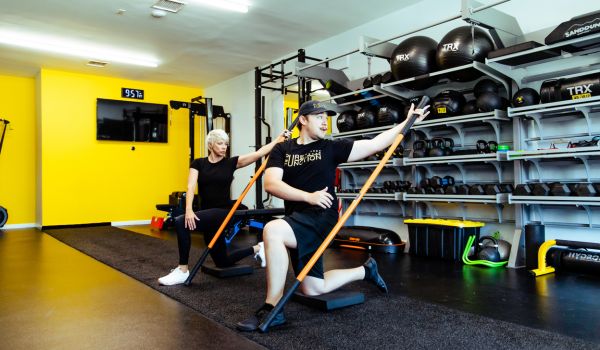What Is Corrective Exercise ?

Corrective exercise is a term used in fitness and physical therapy that describes a systematic approach to addressing and improving movement patterns, posture, and muscle imbalances in the body. It involves specific exercises and techniques as well as functional training designed to correct or compensate for issues like poor posture, muscle weaknesses, joint restrictions, and movement dysfunctions.
In general, the goal of these corrective exercises is to reduce the risk of injury, alleviate pain, and improve overall movement quality. These exercises are often personalized to an individual’s specific needs and can be an essential component of injury prevention and rehabilitation programs.
Corrective Exercise Assessment and Planning
A corrective exercise specialist typically uses a systematic approach to identify the root causes of pain in individuals before prescribing a plan of action.
Let’s take a look at some of the common steps they follow.
1. Assessment: Specialists begin by conducting a thorough assessment of the individual’s movement patterns, posture, and musculoskeletal system. They may use various assessment tools, such as movement screens, range of motion tests, and postural analysis.
2. Medical history: They gather information about the individual’s medical history, past injuries, and lifestyle factors that may contribute to pain.
3. Pain history: Specialists will ask detailed questions about the location, intensity, and characteristics of the pain, as well as any activities or movements that exacerbate or alleviate the pain.
4. Functional tests: Functional movement assessments, like the Functional Movement Screen (FMS) or selective joint assessments, can help pinpoint specific areas of concern, such as joint restrictions or muscle imbalances.
5. Observation: During movement, specialists observe how an individual’s body functions, paying attention to any deviations from normal movement patterns.
6. Palpation: They may use hands-on techniques to identify tender points, muscle tightness, or other signs of dysfunction.
7. Personalized program: Based on the information gathered, corrective exercise specialists develop a personalized exercise program to address the identified issues. This program often includes exercises to improve posture, strengthen weak muscles, increase joint mobility, and correct movement patterns.
8. Monitoring progress: The specialist will continually monitor the individual’s progress and adjust the corrective exercise program as needed.
Corrective Exercise Final Thoughts
Corrective exercise specialists use their expertise and assessment to determine the underlying causes of pain. The goal is to then address these root causes rather than just treating the symptoms. As a result corrective exercise can be provide more effective and lasting pain relief.
Furthermore, this type of exercise serves as an excellent foundation for any strength and fitness program. It can helps athletes of all ages promote movement efficiency, injury prevention, and maximal performance.
Here at Pure Function Fitness Center, all our trainers are Certified Corrective Exercise Specialists through NASM which is globally recognized. This ensures we deliver the highest quality, research backed information to all our clients no matter what their goals are.
For more, check out our in depth guide to corrective exercise and how it can help relieve chronic pain.
If you’re in the Woodland Hills or Los Angeles area, book your FREE 1-1 fitness assessment with our expert trainers at Pure Function Fitness Center and discover a personalized approach to a stronger, healthier you.
The content provided on this health and fitness blog is for informational purposes only. It is not intended as a substitute for professional medical advice, diagnosis, or treatment. Always consult with a qualified healthcare provider before starting any new exercise program, diet, or health regimen. The authors and publishers of this blog are not responsible for any injuries or health issues that may result from the use or misuse of the information provided.